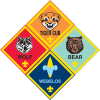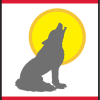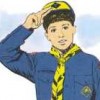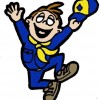Belt Loop
Complete these three requirements 
- Identify the chess pieces and set up a chess board for play.
- Demonstrate the moves of each chess piece to your den leader or adult partner.
- Play a game of chess.
Academics Pin
Earn the Chess belt loop and complete five of the following requirements.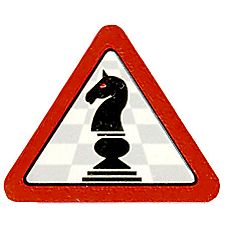
- Demonstrate basic opening principles (such as development of pieces, control center, castle, don’t bring queen out too early, don’t move same piece twice).
- Visit a chess tournament and tell your den about it.
- Participate in a pack, school, or community chess tournament.
- Solve a prespecified chess problem (e.g., “White to move and mate in three”) given to you by your adult partner.
- Play five games of chess.
- Play 10 chess games via computer or on the Internet.
- Read about a famous chess player. Tell your den or an adult family member about that player’s life.
- Describe U.S. Chess Federation ratings for chess players.
- Learn to write chess notation and record a game with another Scout.
- Present a report about the history of chess to your den or family.
Additional Information
Reasons for Playing Chess
- Chess is an educational tool.
- Chess uses higher-order thinking skills.
- Chess provides for healthy competition.
- Chess knows no age, gender, or cultural boundaries.
- Chess can be played anywhere.
- Chess is cost-effective.
- Chess can be an individual or group activity.
- Chess can lead to national recognition.
Know Your Chess Pieces
The King: The King is the most important piece. When he is trapped, his whole army loses. The King can move one square in any direction. (An exception is “castling,” which is explained in the books listed in Resources.) The King may never move into check—that is, onto a square attacked by an opponent’s piece.
The Queen: The Queen is the most powerful piece. She can move any number of squares in any direction—horizontal, vertical, or diagonal—if her path is not blocked.
The Rook: The Rook is the next most powerful piece. The Rook can move any number of squares vertically or horizontally if its path is not blocked.
The Bishop: The Bishop can move any number of squares diagonally if its path is not blocked. At the beginning of the game, you have one Bishop on each side of the King.
The Knight: The Knight’s move is special, as it can jump over other pieces. It moves two squares horizontally or vertically and then makes a right-angle turn for one more square. The Knight always lands on a square opposite in color from the color of the square it left.
The Pawn: The Pawn moves straight ahead (never backward), but it captures diagonally. It moves one square at a time, except on its first move, when it has the option of moving forward one or two squares.
Resources
U.S. Chess Federation
Phone: 931-787-1234
Web site: http://www.uschess.org/
Chess-in-the-Schools
520 Eighth Avenue, Floor 2
New York, NY 10018
Phone: 212-643-0225; fax: 212-564-3083
Web site: http://www.chessintheschools.org
Chess-in-the-Schools is a nonprofit corporation dedicated to motivating at-risk children and enhancing their higher-order thinking skills, self-confidence, and academic achievement by using the game of chess as an educational tool.
Literature About Chess
How to Teach Chess — Chess-in-the-Schools
How to Play Chess — Chess-in-the-Schools
School Mates magazine — U.S. Chess Federation
Chess Life magazine — U.S. Chess Federation
How to Play Chess — U.S. Chess Federation
Bobby Fischer Teaches Chess — Bobby Fischer (Bantam, 1992)
Simple Checkmates — A. J. Gillam (Ballantine, 1996)
The Effect of Chess on Reading (for leaders) — Stuart Marguiles, Ph.D

